Laws of the Game 2019/20
The Laws of the Game 2019/20 come into force 1 June 2019. A number of changes were approved at the 133rd Annual General Meeting of The IFAB on 2 March this year including:
- the introduction of yellow and red cards for misconduct by team officials
- a player being substituted having to leave the field of play at the nearest point on the boundary line
- at a goal kick and a free kick for the defending team in their own penalty area, the ball is in play once it is kicked, i.e. it does not have to leave the penalty area
- clearer wording for ‘handball’
- attacking team players must be at least 1m away from a ‘defensive wall’
- the goalkeeper only has to have one foot on the goal line at a penalty kick
- a new dropped ball procedure
The following summarises the main Law changes for 2019/20 with an explanation for the changes (in alphabetical order).
Dropped ball – Laws 8 & 9
Changes
- If play is stopped inside the penalty area, the ball will be dropped for the goalkeeper
- If play is stopped outside the penalty area, the ball will be dropped for one player of the team that last touched the ball at the point of the last touch
- In all cases, all the other players (of both teams) must be at least 4m (4.5yds) away
- If the ball touches the referee (or another match official) and goes into the goal, team possession changes or a promising attack starts, a dropped ball is awarded
Explanation
- The current dropped ball procedure often leads to a ‘manufactured’ restart which is ‘exploited’ unfairly (e.g. kicking the ball out for a throw-in deep in the opponents’ half) or an aggressive confrontation. Returning the ball to the team that last played it restores what was ‘lost’ when play was stopped, except in the penalty area where it is simpler to return the ball to the goalkeeper. To prevent that team gaining an unfair advantage, all players of both teams, except the player receiving the ball, must be at least 4m (4.5 yds) away.
- It can be very unfair if a team gains an advantage or scores a goal because the ball has hit a match official, especially the referee.
Free Kicks – Law 13
Changes
- When there is a ‘wall’ of three or more defenders, the attackers are not allowed within 1m (1 yd) of the wall; an attacker less than 1m (1yd) from the ‘wall’ when the•kick is taken will be penalised with an indirect free kick
- When the defending team takes a free kick in their own penalty area, the ball is in play once the kick is taken; it does not have to leave the penalty area before it can be played
Explanation
- Attackers standing very close to, or in, the defensive ‘wall’ at a free kick often cause management problems and waste time. There is no legitimate tactical justification for attackers to be in the ‘wall’ and their presence is against the ‘spirit of the game’•and often damages the image of the game.
- The experiment where, at a defending team free kick in the penalty area, the ball is in play once it is kicked and does not have to leave the penalty area, has produced a faster and more constructive restart. Opponents must remain outside the penalty area and at least 9.15m away until the ball is in play. The same change has been made to the goal kick (see Law 16).
Goal Celebrations – Law 12
Changes
- A YC for an ‘illegal’ celebration (e.g. removing the shirt) remains even if the goal is disallowed
Explanation
- Cautions for inappropriate goal celebrations apply even if the goal is disallowed as the impact (safety, image of the game etc.) is the same as if the goal was awarded.
Goal Kick – Law 16
Changes
- The ball is in play once the kick is taken; it can be played before leaving the penalty area
Explanation
The experiment that at a goal kick the ball is in play once it is kicked, and does not have to leave the penalty area, has created a faster and more dynamic/constructive restart to the game. It has reduced the time ‘lost/wasted’ including stopping the tactic of ‘wasting’ time when a defender deliberately plays the ball before it leaves the penalty area knowing that all that will happen is the goal kick will be retaken. Opponents must remain outside the penalty area until the ball is in play
The experiment that at a goal kick the ball is in play once it is kicked, and does not have to leave the penalty area, has created a faster and more dynamic/constructive restart to the game. It has reduced the time ‘lost/wasted’ including stopping the tactic of ‘wasting’ time when a defender deliberately plays the ball before it leaves the penalty area knowing that all that will happen is the goal kick will be retaken. Opponents must remain outside the penalty area until the ball is in play
Handball – Law 12
Changes
- Deliberate handball remains an offence
- The following ‘handball’ situations, even if accidental, will be a free kick:
- The ball goes into the goal after touching an attacking player’s hand/arm
- A player gains control/possession of the ball after it has touches their hand/arm•and then scores, or creates a goal-scoring opportunity
- The ball touches a player’s hand/arm which has made their body unnaturally bigger
- The ball touches a player’s hand/arm when it is above their shoulder (unless the player has deliberately played the ball which then touches their hand/arm)
- The following will not usually be a free kick, unless they are one of the above situations:
- The ball touches a player’s hand/arm directly from their own head/body/foot or the head/body/foot of another player who is close/near
- The ball touches a player’s hand/arm which is close to their body and has not made their body unnaturally bigger
- If a player is falling and the ball touches their hand/arm when it is between their body and the ground to support the body (but not extended to make the body bigger)
- If the goalkeeper attempts to ‘clear’ (release into play) a throw-in or deliberate kick from a team-mate but the ‘clearance’ fails, the goalkeeper can then handle the ball
Explanation
Greater clarity is needed for handball, especially on those occasions when ‘non- d•eliberate’ handball is an offence. The re-wording follows a number of principles:
Greater clarity is needed for handball, especially on those occasions when ‘non- d•eliberate’ handball is an offence. The re-wording follows a number of principles:
- Football does not accept a goal being scored by a hand/arm (even if accidental)
- Football expects a player to be penalised for handball if they gain possession/control of the ball from their hand/arm and gain a major advantage e.g. score or create a goal-scoring opportunity
- It is natural for a player to put their arm between their body and the ground for support when falling.
- Having the hand/arm above shoulder height is rarely a ‘natural’ position and a player is ‘taking a risk’ by having the hand/arm in that position, including whensliding
- If the ball comes off the player’s body, or off another player (of either team) who is•close by, onto the hands/arms it is often impossible to avoid contact with the ball
- When the GK clearly kicks or tries to kick the ball into play, this shows no intention to handle the ball so, if the ‘clearance’ attempt is unsuccessful, the goalkeeper can then handle the ball without committing an offence
Kick-Off – Law 8
Changes
- The team that wins the toss can now choose to take the kick-off or which goal to attack (previously they only had the choice of which goal to attack)
Explanation
- Recent Law changes have made the kick-off more dynamic (e.g. a goal can be scored directly from the kick-off) so captains winning the toss often ask to take the kick-off.
Medical Breaks – Law 7
Changes
- Difference between ‘cooling’ breaks (90 secs – 3 mins) and ‘drinks’ breaks (max 1 min)
Explanation
- In the interests of player safety, competition rules may allow, in certain weather conditions (e.g. high humidity and temperatures), ‘cooling’ breaks (from ninety seconds to three minutes) to allow the body’s temperature to fall; they are different from ‘drinks’ breaks (maximum one minute) which are for rehydration.
Penalty Kick – Law 14
Changes
- The team’s penalty taker can have (quick) treatment/assessment and then take the kick
- The goalkeeper must not be touching the goalposts/crossbar/nets; they must not be moving
- The goalkeeper must have at least part of one foot on/in line with the goal line when the kick is taken; cannot stand behind the line
Explanation
- It is unfair if the kicker needs assessment/treatment and then has to leave the field and cannot take the penalty kick.
- The referee must not signal for the penalty kick to be taken if the goalkeeper is touching the goalposts, crossbar or net, or if they are moving e.g. the goalkeeper has kicked/shaken them
- Goalkeepers are not permitted to stand in front of or behind the line. Allowing the goalkeeper to have only one foot touching the goal line (or, if jumping, in line with the goal line) when the penalty kick is taken is a more practical approach as it is easier to identify if both feet are not on the line. As the kicker can ‘stutter’ in the run, it is reasonable that the goalkeeper can take one step in anticipation of the kick.
Players’ Equipment – Law 4
Changes
- Multi-coloured/patterned undershirts are allowed if they are the same as the sleeve of the main shirt
Explanation
- Manufacturers now make patterned undershirts whose sleeves are the same as the main shirt sleeve; these should be allowed as they help match officials’ decision-making.
Quick free kick and YC/RC – Law 12
Changes
- If the referee is about to issue a YC/RC but the non-offending team takes the free kick quickly and creates a goal-scoring opportunity, the referee can delay the YC/RC until the next stoppage if the offending team was not distracted by the referee
Explanation
- Occasionally, an attack is stopped by a cautionable (YC) or sending-off (RC) offence and the attacking team takes a quick free kick which restores the ‘lost’ attack; it is clearly ‘unfair’ if this ‘new’ attack is stopped to issue the YC/RC. However, if the referee has distracted the offending team by starting the YC/RC procedure, the quick free kick is not allowed. For a DOGSO offence, the player will be cautioned (YC) and not sent-off (RC) because the attack was re-started (as when advantage is applied for a DOGSO offence).
Substitutes – Law 3
Changes
- A player who is being substituted must leave the field by the nearest point on the touchline/goal line (unless the referee indicates the player can leave quickly/immediately at the halfway line or a different point because of safety, injury etc.)
Explanation
- To stop a player who is being substituted ‘wasting’ time by leaving slowly at the halfway line (which is not a Law requirement) the player must leave at the nearest point (as with an injury) unless the referee indicates otherwise, e.g. if the player can leave quickly at the halfway line, there is a safety/security issue or the player leaves on a stretcher. The player must go immediately to the technical area or dressing room to avoid problems with substitutes, spectators, or the match officials. A player who infringes the spirit of this Law should be sanctioned for unsporting behaviour i.e. delaying the restart of play.
Team Officials – Laws 5 & 12
Changes
- A team official guilty of misconduct will be shown a YC (caution) or RC (sending-off)*; if the offender cannot be identified, the senior coach who is in the technical area at the time will receive the YC/RC * Law 12 will have a list of YC/RC offences
Explanation
- The experiment with YC/RC for misconduct by team officials has been successful and has revealed many benefits at all levels, including for young referees dealing with ‘difficult’ adult coaches. If the offender cannot be identified, the senior team official (usually the main coach) in the technical area will receive the YC/RC (as the person responsible for the other team officials).
Source IFAB

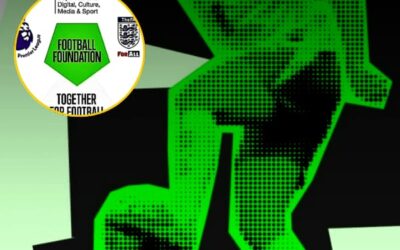
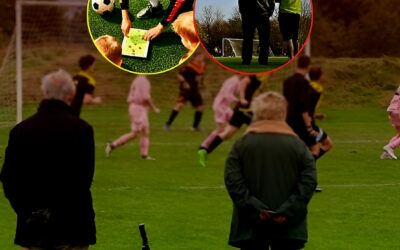

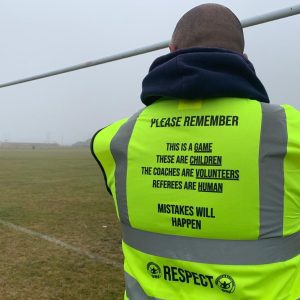

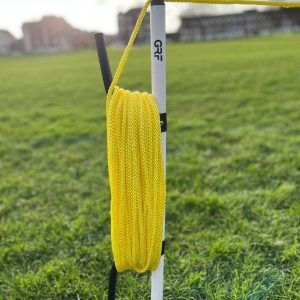
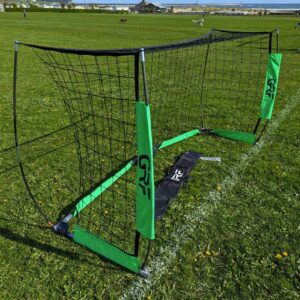
0 Comments